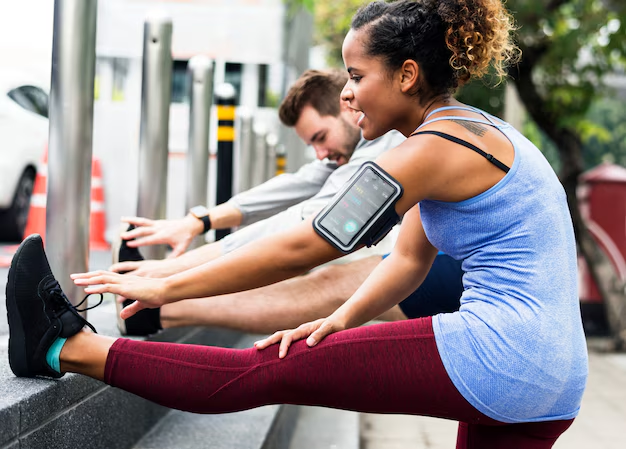How Physical Activity Plays a Role in Preventing Rheumatoid Arthritis
Rheumatoid Arthritis (RA) presents a challenging condition for millions around the globe, impacting daily activities and overall quality of life. While genetics and environmental factors contribute significantly, fostering a proactive lifestyle with regular physical activity can potentially mitigate the risk of developing RA. This detailed guide will delve into the multiple facets of how exercise can be a crucial ally in combating this chronic ailment.
Understanding Rheumatoid Arthritis
What is Rheumatoid Arthritis?
Rheumatoid arthritis is a long-term autoimmune disorder that predominantly affects the joints, leading to inflammation, pain, and eventual joint damage. Unlike osteoarthritis, which is primarily due to wear and tear, RA is driven by an immune system mistakenly attacking healthy joint tissues.
Recognizing the Symptoms
The hallmark symptoms include joint pain and swelling, fatigue, stiffness (often worse in the morning), and sometimes fever. Early detection and intervention are vital in managing the disease effectively.
The Power of Physical Activity
How Physical Activity Influences RA
Engaging in regular exercise is a proven strategy for maintaining overall health, but when it comes to RA, the benefits extend far beyond the obvious. Exercise improves flexibility, builds muscle strength around the joints, and enhances cardiovascular health. This combination of effects helps in reducing the risk factors linked to RA.
The Science Behind Exercise and RA Prevention
While there's no definitive prevention technique for RA, physical activity contributes to:
- Reducing systemic inflammation: Regular physical activity is known to lower biomarkers linked to inflammation, potentially decreasing RA risk.
- Enhancing immune function: Exercise helps modulate the immune system, aiding in preventing autoimmune responses that can lead to RA.
- Weight management: Maintaining a healthy weight through physical activity reduces pressure on joints, especially weight-bearing ones, and lowers fat tissues' inflammatory responses.
Types of Physical Activities Beneficial for RA Prevention
Aerobic Exercise
Engaging in moderate-intensity activities—such as brisk walking, swimming, or cycling—boosts heart health and promotes weight control. These exercises also reduce stress, which is known to exacerbate autoimmune conditions.
Strength Training
Building strength helps provide additional joint support and improves musculoskeletal health. Weight lifting, resistance bands, or body-weight exercises can integrate easily into a weekly routine.
Flexibility Exercises
Stretching and flexibility-enhancing activities like yoga or Pilates improve joint range of motion and decrease stiffness. These exercises are beneficial in preserving joint function and reducing discomfort.
Balance and Coordination Activities
As RA can affect balance, incorporating exercises like Tai Chi can enhance proprioception and prevent falls, an essential secondary benefit.
Creating a Balanced Workout Plan
Starting Slowly and Building Gradually
It's crucial to integrate physical activity progressively, especially for those new to exercise or resuming after a break. Gradual increments in duration and intensity can prevent overuse injuries.
Listening to Your Body
Individuals should pay attention to their body's signals and know when to rest. Overtraining or ignoring pain can lead to setbacks rather than improvements.
Consulting Healthcare Providers
Before starting any new exercise regime, it's wise to discuss plans with a healthcare provider, particularly if there are existing health concerns or risks. They can recommend appropriate activities aligned with individual needs.
Addressing Common Concerns
"Won't exercise worsen the joint pain?"
While it may seem counterintuitive, regular exercise is highly beneficial. It keeps joints flexible and reduces stiffness. Educating oneself about correct postures and techniques ensures safe and effective exercise sessions that alleviate rather than exacerbate pain.
"How can I stay motivated to exercise regularly?"
Staying motivated can be challenging, but adopting strategies like setting achievable goals, tracking progress, and engaging with exercise groups can keep motivation high. Finding enjoyable activities ensures continued participation.
The Role of Lifestyle Adjustments
Supporting Lifestyle Changes alongside Physical Activity
Along with exercising, embracing a holistic approach can amplify the benefits. This includes eating an anti-inflammatory diet, managing stress through meditation or mindfulness, ensuring adequate sleep, and avoiding smoking or excessive alcohol consumption.
Building Habits for the Long Run
Integrating these lifestyle adjustments as part of a daily routine ensures sustained benefits. Gradually incorporating positive changes can prevent feeling overwhelmed and lead to long-lasting lifestyle improvements.
Key Takeaways 🌟
Here's a handy summary to help you take decisive steps toward RA prevention:
- 🧘 Engage in regular exercise: Includes aerobic, strength, and flexibility activities suitable for you.
- 🍎 Embrace a healthy diet: Focus on nutrients that reduce inflammation.
- 🛌 Prioritize rest and stress management: Ensure adequate sleep and relaxation to boost recovery and resilience.
- 📏 Start small and build up: Safely increase intensity and duration over time.
- 👥 Seek guidance and support: Consult healthcare professionals and consider joining community or online support groups for added motivation.
Final Insight
Incorporating regular physical activity and considering overall lifestyle choices can proactively influence one's health and potentially offset the risks associated with rheumatoid arthritis. Though absolute prevention isn't guaranteed, being informed and active provides a greater edge in managing and reducing the onset of RA. By understanding the multifaceted benefits of exercise and integrating them into everyday life, individuals can empower themselves with robust tools to safeguard their joints and overall health.

Related Topics
- a Septic Arthritis
- Are Bananas Bad For Arthritis
- Are Tomatoes Bad For Arthritis
- Can An Inflamed Nerve Cause Arthritis
- Can An Inflamed Nerve Cause Arthritis In Dogs
- Can An x Ray Show Arthritis
- Can Arthritis Be Cured
- Can Arthritis Be Reversed
- Can Arthritis Become Septic After Infection From Injection
- Can Arthritis Cause Numbness